
As I find interesting and relevant books, I will post them on this page with direct links to their descriptions, reviews, and purchase pages on Amazon.com. I only recommend the books I’ve read and only those that I find informative for product design.
-
Watters, E. (2010). “Crazy Like Us” Free Press. ISBN-13: 978-141658708
“Crazy Like Us” is an amazing book. Ethan Watters, a San Francisco native, researched the impact of globalization of mental health care and the perception of psychological disease and diagnosis on the patients and their community. Walters examines several cases: instances and treatment of Post Traumatic Stress Disorder post 2005 tsunami; cases of Anorexia in the East; treatment of depression in Japan; and living with schizophrenia in Africa. In all of these situations, there has been a cultural shift due to the influence of modern Western medicine. For all those interested in how information and attitudes of the West transform culture and beliefs in other cultures it is an indispensable book.
An interesting development: On July 2, 2012, GlaxoSmithKline (GSK) plead guilty to promoting two drugs for unapproved uses and failing to report safety data about a diabetes drug to the Food and Drug Administration (FDA). Read more on BBC News
For more from Amazon, click on the book cover.
-
Csikszentmihalyi, M. (2008). “Flow: The Psychology of Optimal Experience.” Harper Perennial Modern Classics. ISBN-13: 978-0061339202
Mihaly Csikszentmihalyi originally wrote “Flow: The Psychology of Optimal Experience” in 1990. It’s an interesting read, both fascinating and frustrating at the same time. But the main idea, the idea of flow experience, is a powerful one and should be considered during product design.
For more from Amazon, click on the book cover.
-
Sacks, O. (1998). “The Man Who Mistook His Wife for a Hat and Other Clinical Tales.” Touchstone. ISBN-13: 978-0684853949
Dr. Sacks wrote more than one book about perception and cognition. I would strongly recommend “A Man Who Mistook His Wife for a Hat.” It is a collection of essays on unusual manifestations of neurological conditions and is a good starting point into Dr. Sacks books. Each essay is relatively short and provides both the pathology as well as humanistic aspect of the problem.
For more from Amazon, click on the book cover.
-
Sacks, O. (1998). “A Leg to Stand On.” Touchstone. ISBN-13: 978-0684853956
“A Leg to Stand On” is a book documenting proprioceptional difficulties that Dr. Sacks experienced after an unfortunate encounter with a angry bull. This book is particularly revealing to me—it is the first account I read of someone (other than myself) describing their leg as having a “will of its own.” Many years ago, I was run over by a taxi while crossing the street as a pedestrian. I still use a cane and I still encounter that “not exactly my own” feelings about my left leg daily.
For more from Amazon, click on the book cover.
-
Sacks, O. (2009). “Seeing Voices.” Picador USA. ISBN-13: 978-0330507615
“Seeing Voices” is Dr. Sacks’ account of the history of treatment and mistreatment of individuals born with no or limited hearing. This is a wonderful book for those interested in cultural differences between groups with varying perceptual abilities.
For more from Amazon, click on the book cover.
-
Sacks, O. (1998). “The Island of the Colorblind.” Vintage. ISBN-13:978-0375700736
In the book “The Island of the Colorblind,” Dr. Oliver Sacks describes his adventures through a series of islands in Micronesia, which have an unusually high percentage of congenital achromatopsia (sever colorblindness) among the population. One of his traveling companions was a Norwegian scientist, Knut Nordby, an achromatope himself. Dr. Nordby described how his rather rare condition affected his early education. In addition to complete color blindness, congenital achromatopsia causes extreme sensitivity to bright light and poor visual acuity. Dr. Nordby’s condition was diagnosed early, and since his vision was thought too poor to learn to read, he was sent to the school for the blind. But he hated Braille and used his sight to decipher the shadows on the page made by the raised bumps. He “cheated” at Braille and was caught. His teachers punished him for using his eyes to read and made him wear a blindfold in class. Dr. Nordby ran away from that school and eventually taught himself to read printed words and became a successful psychologist.
For more from Amazon, click on the book cover.
-
Bryson, B. (1991). “The Mother Tongue.” Harper Perennial. ISBN-13: 978-0380715435
In his book “The Mother Tongue,” Bill Bryson provides wonderful descriptions of English as it is used and abused (or should we say “made their own”) by people around the world. Consider an advertising message for company called Cream Soda: “Too fast to live, too young to happy.” Did their advertising executives speak English? How about a can of Coke from Japan: “I feel coke & sound special.”
For more from Amazon, click on the book cover.
-
Cassidy, D. (2007). “How the Irish Invented Slang: The Secret Language of the Crossroads.” CounterPunch Books and AK Press. ISBN-13: 978-1904859604
For those interested in the origins of phrases like “say uncle,” check out Daniel Cassidy’s “How the Irish Invented Slang.” This is a fascinating read for English speakers.
For more from Amazon, click on the book cover.
-
Deutscher, G. (2006). “The Unfolding of Language: An Evolutionary Tour of Mankind’s Greatest Invention.” Holt Paperbacks. ISBN-13: 978-0805080124
This is the best non-technical introduction to linguistics I’ve found.
For more from Amazon, click on the book cover.
-
Nunberg, G. (2005). “Going Nucular: Language Politics, and Culture in Confrontational Times.” PublicAffairs. ISBN-10: 1586483455
And if you find politics entertaining, you might want to check out how language is carefully chosen to make you believe and trust a particular politician or a campaign slogan. A book that highlights the use of language in politics is Geoffrey Nunberg’s “Going Nucular: Language, Politics, and Culture in Confrontational Times.” You will be thoroughly manipulated by the end.
For more from Amazon, click on the book cover.
-
Hoffman, E. (1990). “Lost in Translation: A Life in a New Language.” Penguin (Non-Classics). ISBN-13: 978-0140127737
For a wonderful description on painful transitions between cultures, consider reading “Lost in Translation: A Life in a New Language” by Eva Hoffman. I particularly identify with Eva’s story, who emigrated from Poland to Canada as a young teenager. I left Russia for America when I was thirteen—that’s a difficult age to make cultural and language adjustments.
For more from Amazon, click on the book cover.
-
McCloud, S. (1994). “Understanding Comics: The Invisible Art.” Harper Paperbacks. ISBN-13: 978-0060976255
If you would like to learn more about conceptual, interaction, and interface designs of comic books, consider spending some time with Scott McCloud’s “Understanding Comics: The Invisible Art.” It will be time well spent and you might even want to read some of his other wonderful books.
For more from Amazon, click on the book cover.
-
Sapolsky, R. M. (2005). “Monkeyluv.” Scribner. ISBN-13: 978-0743260169
Robert Sapolsky spent his formative years studying baboons in Africa. His observations on culture and its influence on physiology are brilliant and funny. You might want to start with “Monkeyluv,” a collection of previously published articles, and work your way from there.
For more from Amazon, click on the book cover.
-
Sapolsky, R. M. (2002). “A Primate’s Memoir: A Neuroscientist’s Unconventional Life Among the Baboons.” Scribner. ISBN-13: 978-0743202411
“A Primate’s Memoir: A Neuroscientist’s Unconventional Life Among the Baboons” is a series of chronological essays about Dr. Sapolsky’s research in Africa. While I don’t expect you to start darting tourists in museums to take their blood and analyze their stress hormone levels after reading this book, if you’re entertaining such thoughts, it shows your true potential in usability research!
For more from Amazon, click on the book cover.
-
Sapolsky, R. M. (2004). “Why Zebras Don’t Get Ulcers.” Holt Paperbacks; 3rd edition. ISBN-13: 978-0805073690
Now that’s you’ve finished the “Primate’s Memoir” and still are hungering for more, it’s time to find out why zebras are so much less prone to stress-related diseases than us, humans. This is a more technical book and you’ll end up learning some cool vocabulary in addition to gaining basic understanding of body’s reaction to varying degrees of stress.
For more from Amazon, click on the book cover.
-
Sacks. O. (2002). “Uncle Tungsten: Memories of A Chemical Boyhood.” Vintage. ISBN-13: 978-037570404
By now you know that I’m a big fan of Oliver Sacks. And so I’m recommending another one of his books: “Uncle Tungsten: Memories of A Chemical Boyhood.” This is a memoir of Dr. Sacks childhood in war-torn London in the 1940’s. It’s only been a few decades—a single lifetime—and yet the world and our perspective have shifted dramatically. For those of you interested in product design, you might want to read this book from the point of view of anthropology: What changed?
For more from Amazon, click on the book cover.
-
Gelernter, D. (1993). “Mirror Worlds: or the Day Software Puts the Universe in a Shoebox…How It Will Happen and What It Will Mean.” Oxford University Press, USA. ISBN-13: 978-0195079067
David Gelernter’s visionary, although dated, book, “Mirror Worlds: or the Day Software Puts the Universe in a Shoebox…How It Will Happen and What It Will Mean,” is a must for science fiction fans as well as product interaction designers. Dr. Gelernter thinks big and comes up with a futuristic model of computers embedded in the very fabric of society. The book was written in 1993, and he has published a few books since then, but for scope of technological futurisms, this one is my favorite.
For more from Amazon, click on the book cover.
-
Lakoff, G., Turner, M. (1989). “More than Cool Reason: A Field Guide to Poetic Metaphor.” The University Of Chicago Press. ISBN-13: 978-0226468129
“More than Cool Reason: A Field Guide to Poetic Metaphor,” written by George Lakoff and Mark Turner is an eye opener for those interested in metaphors. It’s an interesting blend of language use and mental models.
For more from Amazon, click on the book cover.
-
Tannen, D. (2001). “You Just Don’t Understand.” Harper Paperbacks; 1 edition. ISBN-13: 978-0060959623
For an interesting foray into conversational differences between the sexes, consider reading Deborah Tannen’s “You Just Don’t Understand: Women and Men in Conversation.” You’ve probably noticed that a lot of my book recommendations have to do with books about language. Our memory is supported by the structural skeleton of language—a lot of what we know is wrapped up in words. The biggest failures of communication between product designers and their audience come from language failures.
For more from Amazon, click on the book cover.
-
Norman, D. (2002). “The Psychology of Everyday Things.” Basic Books. ISBN-13: 978-0465067107
In his book “The Psychology of Everyday Things,” Donald Norman, a retired professor of cognitive science, provides wonderful examples of everyday objects which seem to have been designed to frustrate and humiliate their users. Norman goes on a tirade about doors that won’t open and light switches that don’t give clues to their operation. “Design is really an act of communication, which means having a deep understanding of the person with whom the designer is communicating,” he writes. When that communication fails, errors occur. (Thus all of my language book recommendations!)
For more from Amazon, click on the book cover.
-
Sapolsky, R. M. (2017). “Behave: The Biology of Humans at Our Best and Worst.” Penguin Press. ISBN-13: 978-1594205071
It’s not a fast read, nor is it an easy read. But the book is an amazing resource for understanding behavior from micro to macro levels. I kept finding myself reading news paper articles and other books and noting how the behaviors described there were examples of Dr. Sapolsky was talking about.
That said, I wish for readers’ sake Dr. Sapolsky didn’t use abbreviations and acronyms so often. I understand that in conversation it’s much easier to say ACC than to pronounce Anterior Cingulate Cortex. But in written form, that objection goes away. I found myself endless having to look up the 1000s of abbreviations through out the book. I would have so much preferred to have everything written out — it’s easy to have one’s eyes slide over the long complicated phrase (there’s no need to even say inside the head when reading). But having to look up dlPFC, and ERPS, and SNPs was endlessly interrupting (not looking them up was endlessly confusing). So this is my one grrr for the book.
I’ve recommended this book to everyone now. It’s an amazing work. And if you feel like it’s too much in the beginning, it’s okay. It gets better and better as Dr. Sapolsky zooms out and changes scales from atoms, molecules, and cell to examples of human interaction. Wonderful book!
For more from Amazon, click on the book cover.


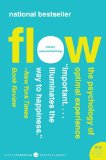
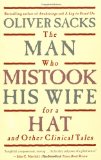

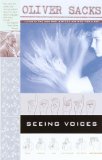
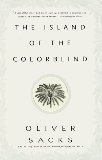
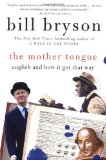

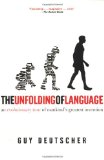

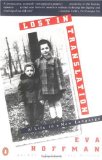





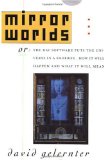

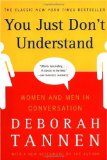


5 comments for “Recommended Books”